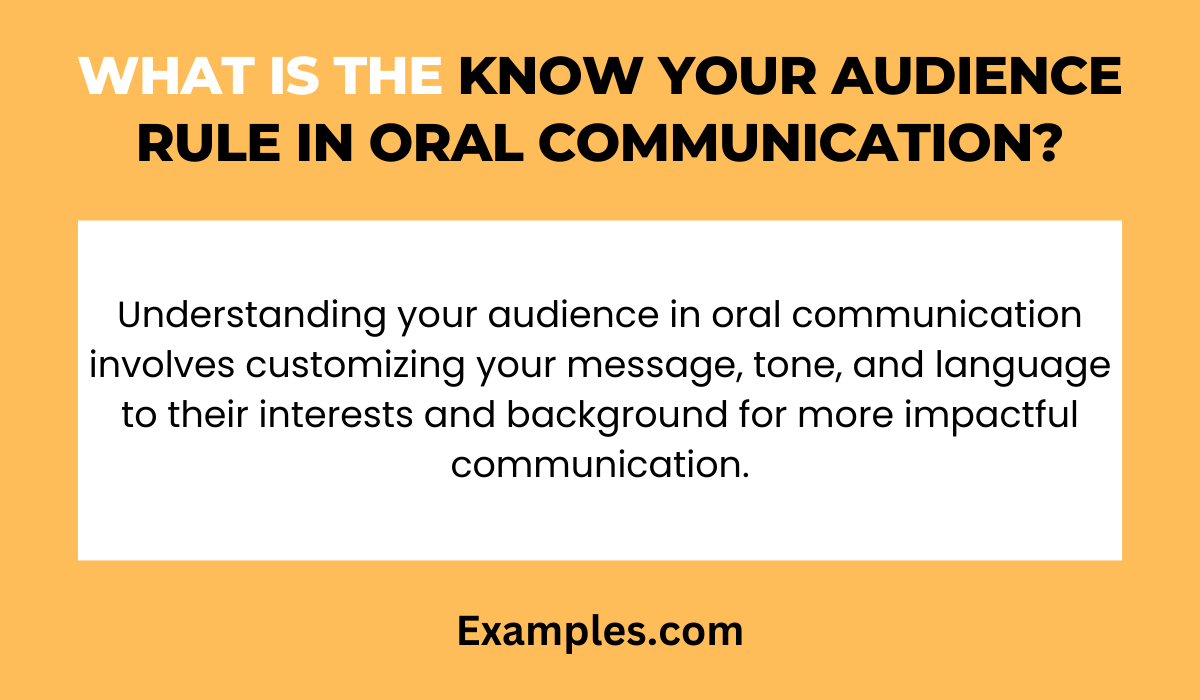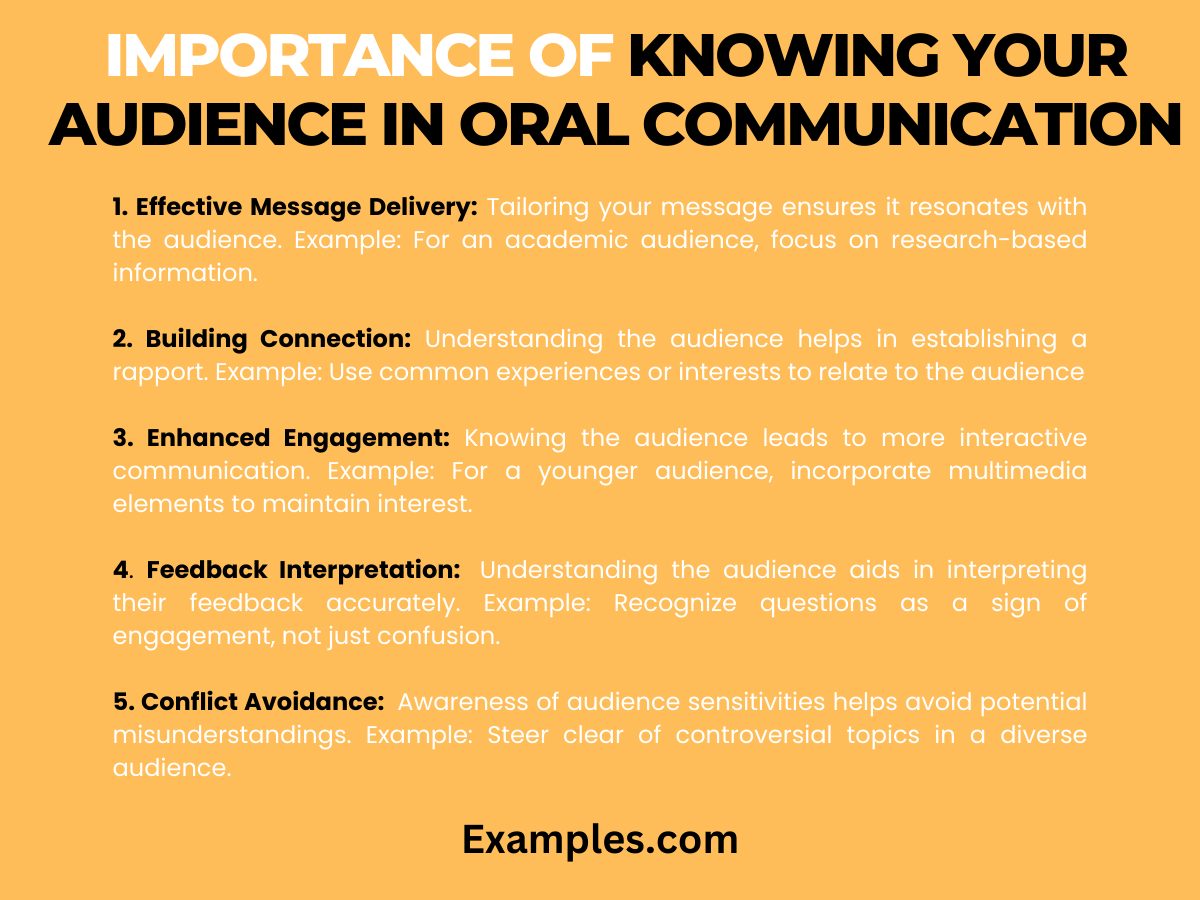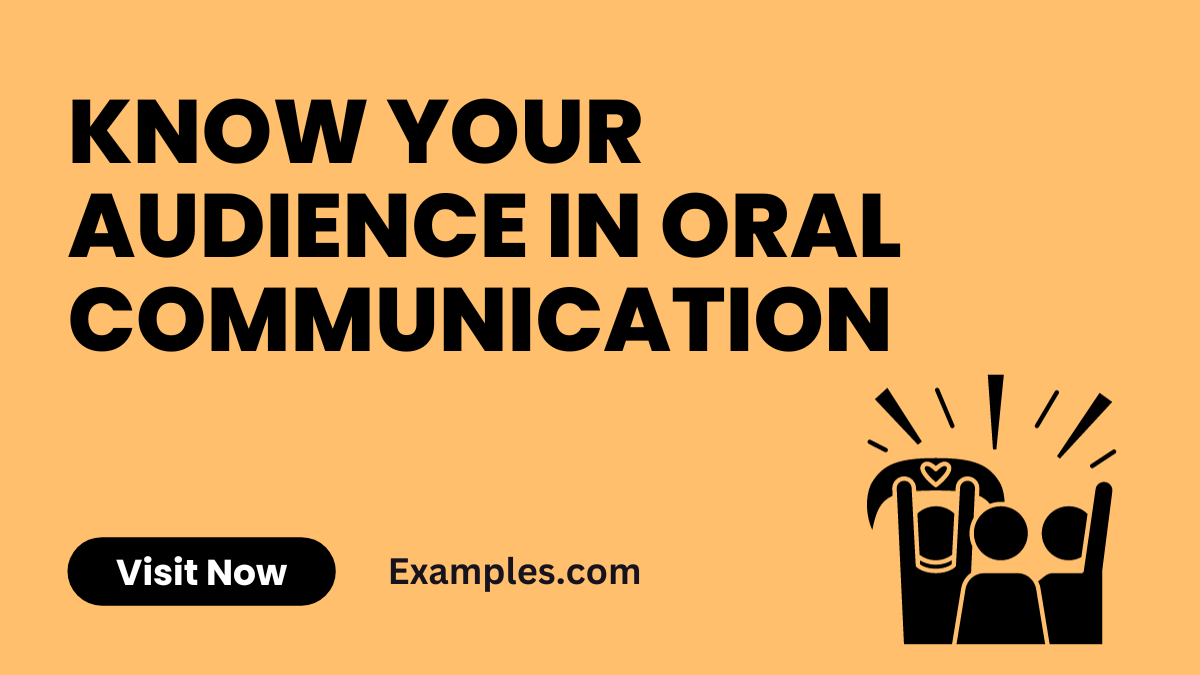Know Your Audience in Oral Communication
Understanding your audience is a cornerstone of effective Oral Communication Skills. Tailoring your message to suit your listeners’ preferences, understanding, and expectations can significantly elevate the impact of your communication. This complete guide offers insights into the art of audience analysis in Oral Communication. It provides strategies and real-world examples to help you gauge your audience’s interests, knowledge level, and attitudes, enabling you to communicate more effectively and establish a meaningful connection. Whether you’re presenting to a large group or conversing in a small meeting, these tips will enhance your ability to resonate with your listeners.
What is the Know your Audience Rule in Oral Communication?

Understanding your audience is fundamental in effective Oral Communication. This rule involves tailoring your message to the specific interests, background, and expectations of your listeners. By knowing your audience, you can choose the right tone, language, and examples, making your communication more impactful and relevant.
- Tailoring the Message: Customize your speech to resonate with the audience’s interests.
Example: For a tech-savvy crowd, use relevant technological references. - Cultural Sensitivity: Be aware of cultural differences to avoid misunderstandings.
Example: Research cultural norms of the audience before an international presentation. - Age Appropriateness: Adjust your content and language based on the age group.
Example: Use simpler language and examples for a younger audience. - Understanding Audience Expectations: Know what the audience expects to learn or experience. Example: For a business seminar, focus on industry-specific insights.
- Assessing Prior Knowledge: Gauge the audience’s background knowledge on the topic.
Example: Avoid technical jargon if the audience is not familiar with the subject. - Identifying Audience Interests: Align your message with the audience’s interests.
Example: Incorporate current trends in your speech for a youthful audience. - Reading Audience Feedback: Observe and adapt to audience reactions.
Example: If the audience seems disengaged, introduce a more interactive segment. - Language and Jargon Use: Choose language that is accessible to your audience.
Example: Use layman’s terms when addressing non-experts. - Psychographic Factors: Consider the values, beliefs, and attitudes of your audience.
Example: For an environmentally conscious group, highlight sustainable practices in your talk. - Engagement Techniques: Use strategies like questions or stories to engage different audiences.
Example: Start with a relevant story to capture the audience’s attention.
How Do You Know Your Audience in Oral Communication?
- Pre-Event Surveys: Gather information about your audience before the event.
Example: Use surveys to understand the audience’s background and preferences. - Observation: Pay attention to the audience’s body language and reactions.
Example: If listeners nod in agreement, it indicates understanding and interest. - Engaging in Dialogue: Interact with the audience before or after the speech.
Example: Have informal conversations to gauge their interests and opinions. - Social Media Analysis: Review comments and interactions on relevant social platforms.
Example: Check LinkedIn discussions to understand professional audience interests. - Feedback Forms: Collect feedback to learn about audience perceptions.
Example: Use post-event feedback forms for insights on audience engagement. - Research on Demographics: Study the demographic data of your expected audience.
Example: Look into age, profession, and educational background for content tailoring. - Analyzing Previous Interactions: Review past engagements with similar audiences.
Example: Reflect on previous presentations to identify what resonated well. - Asking Direct Questions: Pose questions during the speech to gain insights.
Example: Ask the audience about their experience with the topic. - Networking: Use networking opportunities to learn about audience members.
Example: Engage in conversations during breaks to understand their perspectives. - Utilizing Analytics Tools: For virtual events, use analytics to understand audience behavior.
- Example: Analyze webinar engagement metrics for audience insights.
Importance of Knowing Your Audience in Oral Communication

- Effective Message Delivery: Tailoring your message ensures it resonates with the audience.
Example: For an academic audience, focus on research-based information. - Building Connection: Understanding the audience helps in establishing a rapport.
Example: Use common experiences or interests to relate to the audience. - Enhanced Engagement: Knowing the audience leads to more interactive communication.
Example: For a younger audience, incorporate multimedia elements to maintain interest. - Feedback Interpretation: Understanding the audience aids in interpreting their feedback accurately. Example: Recognize questions as a sign of engagement, not just confusion.
- Conflict Avoidance: Awareness of audience sensitivities helps avoid potential misunderstandings.
Example: Steer clear of controversial topics in a diverse audience. - Persuasion Effectiveness: Knowledge of the audience enhances the persuasiveness of your message. Example: Use relevant examples to persuade a business audience.
- Resource Optimization: Knowing the audience allows for better use of resources.
Example: Focus on specific areas of interest to maximize engagement. - Credibility Establishment: Audience knowledge enhances your credibility as a speaker.
Example: Address audience-specific challenges to showcase your expertise. - Customized Learning Experiences: Tailor educational content based on the audience’s level.
Example: Adjust the complexity of your content for students or professionals. - Cultural Appropriateness: Ensures your communication is culturally appropriate.
Example: Be mindful of cultural nuances in international settings.
Types of Audience in Oral Communication
- The Experts: Highly knowledgeable about your topic.
Example: Presenting a medical breakthrough to a group of doctors. - The Lay Audience: General public with no specific knowledge of the topic.
Example: Explaining scientific concepts at a community event. - The Managers: Focus on the practical applications and outcomes.
Example: Pitching a business plan to company executives. - The Skeptics: Critical and questioning audience.
Example: Introducing a controversial topic in a debate. - The Enthusiasts: Already interested and engaged in your topic.
Example: Speaking at a fan convention about a popular series. - The Mixed Group: A combination of different knowledge levels and interests.
Example: Delivering a university lecture to students from various disciplines. - The Indifferent Audience: Not inherently interested in your topic.
Example: Mandatory training sessions where attendance is required. - The Supportive Crowd: Positive and agreeable audience.
Example: Speaking at a fundraiser event where attendees support the cause. - The Decision Makers: Can approve or deny your proposals.
Example: Pitching a new project idea to stakeholders. - The International Audience: Diverse cultures and languages.
Example: Presenting at a global conference with attendees from around the world.
Understanding the various types of audiences is crucial in Oral Communication. Tailoring your approach to the specific audience, whether they are experts, skeptics, enthusiasts, or a mixed group, can significantly enhance the effectiveness of your communication. This guide equips you with the knowledge and examples needed to identify and effectively engage with diverse audiences, ensuring your message is not only heard but also resonates meaningfully with those you are addressing.
To conclude the article on Know Your Audience in Oral Communication, it’s essential to reiterate that audience analysis is not just a step but a cornerstone in the realm of effective communication. Whether the setting is a business presentation, a public speaking event, or a casual conversation, tailoring your message to the audience’s preferences and expectations is key to ensuring your message resonates and has the desired impact. For further exploration into audience analysis, a visit to Psychology Today’s “6 Ways to Speak with Greater Confidence” at Psychology Today can offer valuable insights into adapting your communication style to different audience types, even under anxiety-inducing circumstances??.
Additionally, Symanto’s comprehensive guide on “Audience Analysis: What It Is and How to Conduct It” at Symanto provides an in-depth look at the process and significance of audience analysis in various fields including marketing, public speaking, and technical writing. This resource highlights the importance of understanding audience demographics, psychographics, and behaviors for creating targeted and effective communication strategies????.
Incorporating these external resources will not only add depth to the article but also offer the readers additional, authoritative sources to enhance their understanding and application of audience analysis in oral communication.



